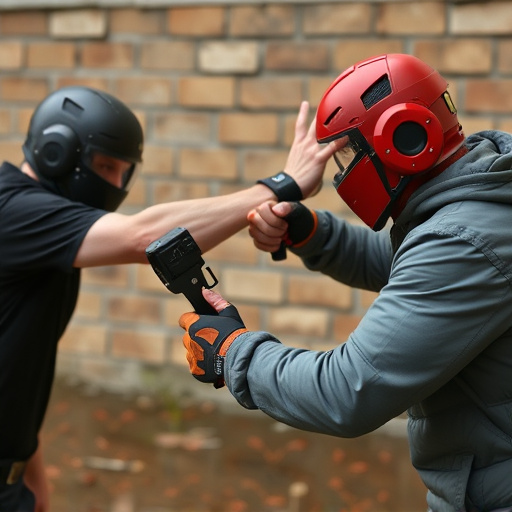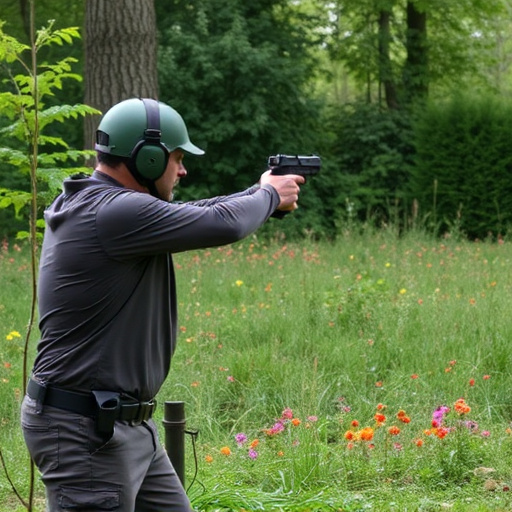Analyzing Current Spread: Optimizing Stun Gun Design for Women’s Self-Defense
The spread of electrical current in mediums, like metal conductors, is crucial for designing effecti…….
The spread of electrical current in mediums, like metal conductors, is crucial for designing effective self-defense tools like stun guns. Understanding how electricity flows and disperses helps create powerful yet safe stun guns for women, balancing impact with control to ensure optimal defense in critical scenarios. Factors like voltage, electrode design, and current type determine a stun gun's effectiveness, with higher voltage and ergonomic designs enhancing performance while safety considerations, including proper grounding and testing, safeguard users from harm. Advanced techniques map current flow, enabling engineers to design stun guns with predictable spread patterns, maximizing contact area for efficient current transfer across targeted areas. This meticulous approach prioritizes user safety and reliable deterrence, making the "best self-defense stun gun for women" a powerful tool for personal protection.
“Unveiling the secrets of electrical current spread is pivotal in enhancing personal safety, particularly with self-defense devices like stun guns. This article explores the intricate dance of electricity, delving into ‘Understanding Electrical Current and Its Behavior’ to demystify how it interacts with these weapons. We highlight why ‘Spread Pattern Analysis’ is a game-changer for stun gun design, especially catering to women seeking effective yet safe self-defense solutions. By examining key factors and real-world applications, we guide readers through the process of selecting the best self-defense stun gun.”
- Understanding Electrical Current and Its Behavior
- Why Spread Pattern Analysis is Crucial for Self-Defense Devices
- Key Factors Influencing Current Spread in Stun Guns
- Measuring and Interpreting Spread Patterns
- Designing Optimal Stun Gun Geometries
- Real-World Applications and Safety Considerations
Understanding Electrical Current and Its Behavior

Electrical current, a flow of charged particles, is fundamental to understanding how power reaches our everyday devices and appliances. When we discuss current spread patterns, it’s crucial to recognize that the behavior of electricity isn’t uniform; it varies depending on the medium through which it travels, much like a river changes course based on the terrain. In metal conductors, for instance, current flows smoothly, guided by the orderly arrangement of atoms, making it an efficient transporter of power.
For self-defense purposes, understanding current is particularly relevant when considering stun guns, a popular defense tool for women. A best self-defense stun gun generates a powerful electrical pulse designed to disrupt muscle control in an attacker. The current spreads quickly through the body, temporarily incapacitating the subject without causing permanent harm. This knowledge of current spread patterns is essential not only for designing effective self-defense devices but also for understanding and mitigating potential risks associated with high-voltage electricity.
Why Spread Pattern Analysis is Crucial for Self-Defense Devices

In the context of personal safety, especially for women seeking effective self-defense tools, understanding the spread pattern of electrical current is vital. This analysis plays a crucial role in designing and selecting the best self-defense stun gun, as it determines the device’s ability to incapacitate an attacker. The spread pattern refers to how the electric current disperses from the point of contact on the target, affecting the level of shock and effectiveness of the stun.
By studying this pattern, manufacturers can optimize the design of stun guns, ensuring a precise and powerful discharge that maximizes impact while minimizing risk to bystanders or the user. For women carrying self-defense stun guns, knowing how current spreads can make all the difference in a dangerous situation. It allows them to choose devices with optimized spread patterns for better control and safety during an encounter, ultimately enhancing their ability to defend themselves effectively.
Key Factors Influencing Current Spread in Stun Guns

The spread pattern of electrical current in stun guns is influenced by several critical factors, especially when considering their effectiveness as self-defense tools, particularly for women seeking the best self-defense stun gun. One key factor is the voltage output—higher voltage generally results in a more extensive current spread, affecting a larger area and potentially incapacitating an attacker faster. However, this must be balanced with safety considerations to prevent collateral damage or unintended targets.
The design of the electrodes plays a significant role as well. Close proximity and efficient contact between the stun gun’s electrodes and the attacker’s body are essential for optimal current flow. Some stun guns employ innovative designs, like ergonomic shapes tailored for ease of use by women, ensuring secure gripping and better electrode contact during a defensive scenario. Additionally, the type of current (AC or DC) and its frequency can impact the spread, with AC sometimes considered more effective in penetrating clothing and affecting muscular areas.
Measuring and Interpreting Spread Patterns

Measuring and interpreting spread patterns is a critical aspect of understanding how electrical current flows through various mediums, especially when considering self-defense tools like stun guns. In the context of a best self-defense stun gun for women, knowing the spread pattern can provide valuable insights into its effectiveness and range. By analyzing the distribution of current, users can ensure optimal performance during critical situations.
Researchers employ advanced techniques to map these patterns, often using specialized equipment to visualize the flow. This data is crucial for engineers and designers who aim to create more efficient devices, catering to specific user needs. For instance, a well-designed stun gun should have a predictable spread pattern, ensuring consistent stun effects over a desired area—a key factor in self-defense scenarios where every second counts.
Designing Optimal Stun Gun Geometries

When it comes to designing optimal stun gun geometries for self-defense, understanding how electrical current spreads is paramount. For best self defense stun guns intended for women (or anyone), the goal is to maximize the surface area of contact to ensure efficient current flow through the target. This involves crafting designs that facilitate better skin-to-device contact, allowing for a more effective stun. Researchers and manufacturers often turn to advanced materials and innovative shapes, such as textured or contoured surfaces, to achieve this.
These geometric considerations are crucial in determining the stun gun’s overall performance and safety. Proper geometry ensures that the device delivers a powerful enough shock to incapacitate an assailant while minimizing off-target effects. By optimizing these designs, manufacturers aim to create the best self defense stun gun for women, balancing power with precision and reliability, ultimately providing individuals with a reliable tool for personal safety.
Real-World Applications and Safety Considerations

In real-world applications, understanding electrical current spread patterns is crucial, especially in the context of personal safety devices like the best self-defense stun guns for women. By analyzing how electricity flows and disperses, manufacturers can design more effective and safer tools. This knowledge helps in optimizing the placement of electrodes and controlling the intensity and duration of shocks, ensuring user protection while neutralizing potential threats.
Safety considerations are paramount when dealing with electrical current. Proper grounding, insulation, and control mechanisms must be implemented to prevent accidental shocks or harm to users. Regular testing and maintenance of these devices, including self-defense stun guns, are essential to guarantee their reliability and safety in various environments. This meticulous approach ensures that the technology not only delivers a powerful deterrent but also does so responsibly.
Electrical current spread pattern analysis plays a pivotal role in enhancing the effectiveness of self-defense devices, particularly for best self-defense stun guns designed for women. By understanding how current spreads and factors that influence it, manufacturers can optimize geometries to ensure maximum impact while maintaining safety. This knowledge is essential for creating reliable and effective tools, empowering individuals with peace of mind and protection. When choosing a stun gun, considering the technology behind current spread analysis can be a key factor in selecting the best self-defense option for personal safety.


